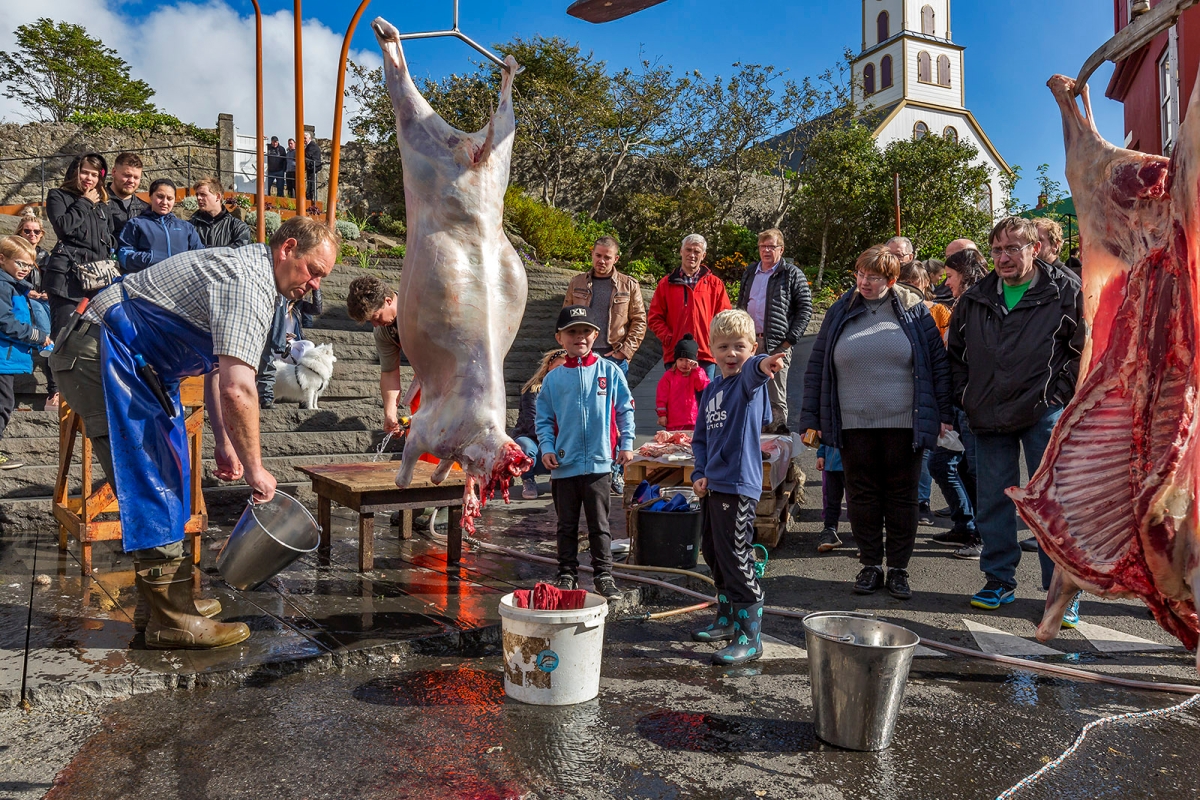Population
10. Oct 2023
Population stands at 54,530 – a year-on-year increase of 1.1%

July and August are the high season for migration to and from the Faroes. In the summer months, many move to the Faroes, and many others move abroad to study. This trend is reflected in the population figures, with a population increase in July and a subsequent drop in August. This was also the case this year, as shown in the graph below.
[px-graph-1]
The population trend is determined by net migration (the difference in the number of immigrants and emigrants) and the excess of live births over deaths. The population growth in the past year comes from an excess of births of 209 people and a net migration figure of 367 people.
The past year saw a slight increase in the excess of births and a slight decrease in net migration compared to the previous 12-month period. The main reason for the increased excess of births was that fewer people died than in the previous period. Net migration decreased due to lower immigration and higher emigration figures. See more details in the table below.
Excess of births on the increase
The trends in the graph below show an increasing excess of births in the past few months. This increase comes after last year’s significant decrease, caused by fewer births and more deaths than normal. In recent months, the birth rate has dropped slightly. However, the death rate has dropped even more, resulting in a higher excess of live births over deaths.
[px-graph-2]
Net migration unchanged
The trends in the graph below show that there has been little difference between immigration and emigration in recent months. The immigration trend dropped slightly last autumn but has since remained stable, as has the emigration trend, resulting in an unchanged net migration trend.
[px-graph-3]
Summer migration
July and August are the busiest months for migration in and out of the Faroes. Many move to the Faroes in the summer months, and many also move abroad to study. Last year’s July/August migration figures were slightly lower than the average over the past decade. The graph below shows the summer migration trends over the past decade.
[px-graph-4]
Increase in non-Danish citizens
Danish citizens have a smaller role in the population growth than they used to. Only 14% of the population growth in the past year was represented by Danish citizens. Five years ago, this figure was 68%. Asian and non-Nordic EU citizens made up the biggest portion of the population growth in the past year. About 12% were African citizens.
[px-graph-5]
Highest growth in the largest municipalities
The municipalities with the highest population growth were Tórshavn, Klaksvík and Runavík, followed by Nes and Sjóvar municipalities. The table below shows the population across the 29 municipalities, with details for each town and village, on 1 September 2022 and 1 September 2023.
[px-graph-6]
Population figures have a one-month lag
The figures have a one-month lag due to delays in registrations, especially regarding address changes, where many registrations are made after the month of address change has ended. To accommodate as many corrections as possible, there is a one-month lag in the data.
About the population figures
The population is defined as all individuals registered in the national register as residents of the Faroe Islands. Population data includes date of birth, gender, place of birth, citizenship, relationship status, and, where applicable, information on immigration and emigration, domestically as well as between the Faroe Islands and other nations.
About the trend
The trend describes the population trend by adjusting for seasonal effects and other error components in the population figure.